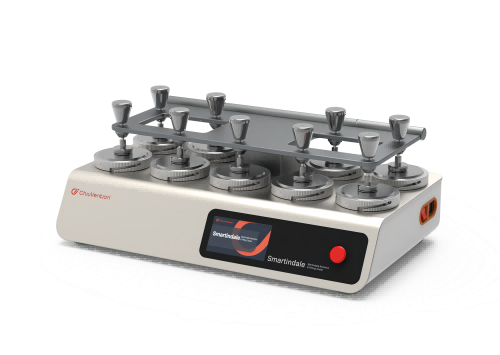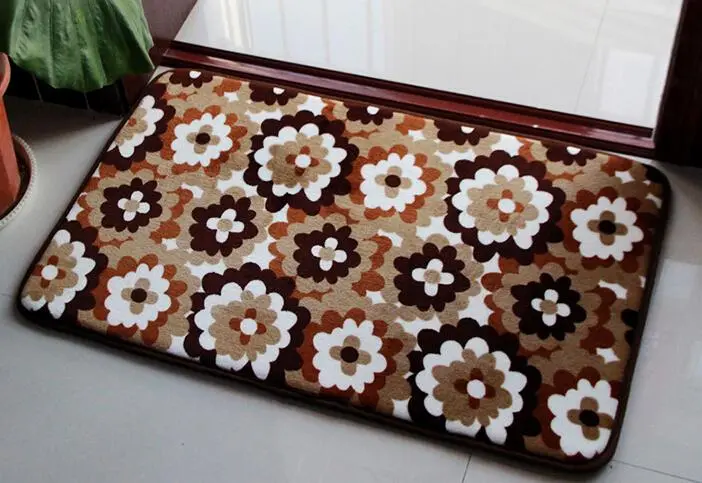Many textiles are required to be tested for abrasion resistance, such as bed linen, duvet covers, pillowcases, sofa cloth, floor coverings and some coated fabrics.
Common test standards
Regarding the determination of textile abrasion resistance, there are many kinds of standards and different methods. After years of research by national textile standards and test workers, the current test method has converged, basically formed a standard ISO12947 for the determination of abrasion resistance.
International Standard
ISO 12947.2-1998 “Determination of the resistance of textiles to abrasion by the Martindale method Part 2: Determination of specimen breakage”.
ISO12947.3-1998 “Determination of abrasion resistance of textiles by the Martindale method, Part 3: Determination of quality loss”.
ISO 12947.4-1998 “Determination of the abrasion resistance of textiles by the Martindale method Part 4: Evaluation of changes in appearance”.
American Society for Testing and Materials (ASTM) Standards
ASTMD4966-2010 Martindale Abrasion Tester for Textile Abrasion Resistance Testing
European Union Standard
ENISO12947-2:1998 “Determination of abrasion resistance of textiles by the Martindale method for textiles Part 2: Determination of specimen breakage”.
ISO 12945-2 is an international standard that specifies the methods for determining the pilling resistance and other related surface changes of textile fabrics. This test method is part of a series that addresses the pilling characteristics of textiles. Pilling is the formation of small, tangled balls of fibers on the surface of a fabric, which can affect its appearance and performance.
Key Elements of ISO 12945-2
Test Apparatus:
Modified Martindale Test Equipment: A device designed to simulate the wear and pilling of fabrics under controlled conditions.
The Martindale pilling tester moves fabric samples in a Lissajous figure motion against an abrasive material or against other fabric samples.
Sample Preparation:
Fabric samples are cut into specified sizes, usually circular with a diameter of 140 mm.
Multiple samples are prepared to ensure the accuracy and reliability of the test results.
Test Procedure
Mounting:
The fabric samples are mounted on the sample holders of the Martindale machine.
The samples are subjected to a specified pressure, typically 9 kPa or 12 kPa.
Testing:
The samples are rubbed against a standard abrasive fabric or other samples for a specified number of cycles.
The test is conducted under controlled conditions of temperature and humidity.
Evaluation:
The pilling resistance is evaluated based on the appearance of the fabric surface after a specified number of cycles.
The assessment is usually done visually, comparing the tested samples to standard pilling rating scales (e.g., ISO pilling photographs).
The results are rated on a scale from 1 to 5, with 5 indicating no pilling and 1 indicating severe pilling.
ENISO12947-3: 1998 “Determination of abrasion resistance of textiles by the Martindale method for textiles Part 3: Determination of mass loss”.
ENISO12947-4:1998 “Determination of abrasion resistance of textiles by the Martindale method Part 4: Evaluation of changes in appearance”.
Note:
Several influential international standardisation organisations issued the above standards. They are the standards for testing fabric abrasion by the Martindale method. Among them, the EU standard is equivalent to the adoption of the ISO standard.
The U.S. standard has two parts. It includes a test for abrasion resistance. It has rules for the Martindale tester and materials. The standard is like the International Organisation for Standardisation standard ISO12947.2 ~ 4. Both test the loss of quality and changes in appearance. But, ISO12947.3 ~ 4 is a bit different.
Abrasion resistance testing for different textile types
Tests for abrasion resistance vary by textile type, use, and properties. Below is a comparison of abrasion tests for floor coverings. It covers coated, decorative, and functional textiles.
Floor coverings
Abrasion resistance test methods:
Using the Martindale test method or the Taber Abrasion test. These tests simulate friction on the floor.
Assessment indicators:
The main focus is on abrasion resistance and the change in appearance. The key indicators are the number of cycles in the Martindale test and the amount of abrasion in the Taber test.
Other considerations:
Carpets, for example, often need to resist abrasion and staining. They must also be easy to clean.
Consider:
Carpets and other floor coverings need to resist wear, stains, and be easy to clean.
Coated Textiles
Test methods for abrasion resistance:
You can also use the Martindale test method or the Taber Abrasion test. But, we need to consider how the coating affects the test.
Evaluation indicators:
We need to consider both the wear resistance of the coating. We also need to consider the wear resistance of the fabric. We also need to consider the adhesion of the coating after abrasion. We also need to consider changes in appearance. The number of cycles and the amount of abrasion are the main indicators.
Other considerations:
The type and thickness of the coating may change how resistant coated textiles are. They change how the textiles resist abrasion. So, someone needs to assess it for different types of coatings.
Trimmed Textiles
Abrasion resistance test method:
Surface abrasion tests are usually carried out using the Martindale test method.
Evaluation Indicators:
The main focus is on the textile’s abrasion resistance. Also, on how its appearance changes after abrasion. The number of cycles and the amount of abrasion are key indicators.
Other considerations:
Decorative textiles are known for their appearance. Wear affects this, causing color change or pattern wear. So, the abrasion test must account for these effects.
Functional textiles
Abrasion resistance test methods:
In addition to the Martindale test, we need to consider the specific use of functional textiles. For example, fabrics with waterproof function can use the water cycle test method.
Evaluation indexes:
We need to determine evaluation indexes for functional textiles. These indexes should match their characteristics, like waterproofness, breathability, and antibacterial properties. So, besides abrasion resistance, we also need to consider the above functions.
Other considerations:
Functional textiles need multiple traits at once. So, the abrasion test must also consider its link to other functions. In the actual test, you must choose the right test method. Do so based on the textile’s characteristics and use. Consider also its relationship with other performance measures.
Smartindale Martindale Abrasion and Pilling Tester
The Smartindale Martindale Abrasion and Pilling Tester tests fabrics. It checks abrasion and pilling of cotton, linen, silk, and other textiles. It also tests film, knits, woolens, fake leather, and gloves. Over 20 international standards use it. These include ISO 12945-2-2020, ISO12947-2-2016, BS EN 530-2010, and ASTMD4970/4970M-22.

An algorithm drives friction. It generates a Lissajous curve for precise operation without calibration. Switch between pilling and friction testing with a button touch. You can do this without changing pins. You can control and monitor it through a mobile app. Users can upload test data to ERP or LIMS for testing. Get martindale abrasion tester prices now by reaching us below.
Factors affecting the abrasion resistance of fabrics
Fabric organisation
The fabric’s structure determines its compactness and thickness. These affect its abrasion resistance. Plain weave > twill > satin.
Geometric structure of textile
The fabric’s thickness, warp and weft density, weight, apparent density, and hair content.
Thicker fabric has higher warp and weft density. It also has higher weight per unit area and apparent density. It also has more hair content. These traits mean better abrasion resistance. Conversely, thin, low-density fabric has poor abrasion resistance.
Fibre type
In general, the order of fibre abrasion resistance is: polyamide > polypropylene > PVC > PEG > polyester > acrylic > PVC > wool > silk > cotton > linen > rich fibre > copper-ammonia fibre > viscose fibre > vinyl ester fibre > glass fibre.
Fibre structure
Comparing the fiber structures, round fibers resist abrasion more than shaped fibers. Finer fibers have worse abrasion resistance. So, to improve abrasion resistance, choose round fibers. They should have good abrasion resistance as much as possible.
Finishing
Finishing can change fabric’s abrasion resistance. It combines physical and chemical methods to give fabric a specific performance. For example, protective finishing: waterproof, fireproof, mildew, oil, cold, anti-pilling and anti-pilling.
We provide a range of fabric abrasion testers, including taber and Wyzenbeek testers, to conduct fabric pilling and abrasion resistance tests. Reach out to us below to learn more.
What’s App: +86 180 2511 4082
Tel: +86 769 2329 4842
Fax: +86 769 2329 4860
Email: [email protected]



